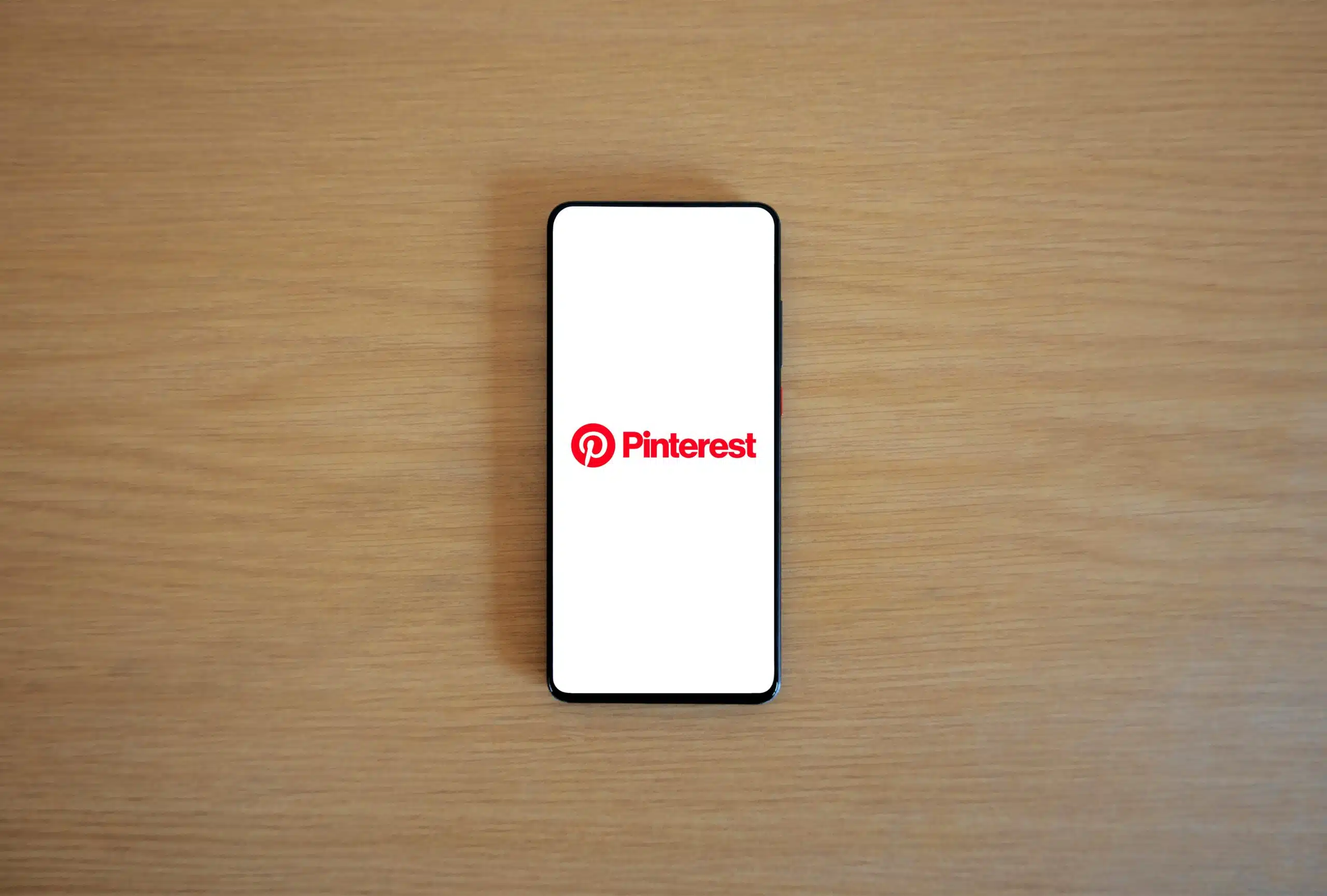Pinterest marketing offers a unique opportunity to reach and engage a highly visual audience. This platform excels in showcasing short-form content like images, infographics, and short videos. By integrating various types of marketing strategies, such as AI marketing, email marketing, and traditional social media tactics, businesses can effectively leverage Pinterest to drive traffic and increase brand visibility. In this article, we will explore the key elements of Pinterest marketing and how to optimize your efforts to achieve the best results.
What Is Pinterest?
Pinterest is a visually driven social media platform where users discover, save, and share ideas and inspiration for various projects and interests. Launched in 2010, Pinterest has grown into a significant tool for personal and professional use, attracting over 450 million active users worldwide. The platform basically operates like a virtual pinboard, allowing users to “pin” images, videos, and links to categorized boards, creating a curated collection of content tailored to their preferences and needs.
How Is Pinterest Used for Marketing?
Visual Discovery and Inspiration
Pinterest is primarily known for its visual discovery engine. Users can search for ideas and inspiration on a wide range of topics, including home decor, fashion, food recipes, travel destinations, and much more. Moreover, by typing keywords into the search bar, users are presented with a vast array of visually appealing pins that link to external websites, blogs, or online stores.
Pinning and Boards in Pinterest
Users organize their discoveries by pinning content to boards they create. Likewise, boards can be categorized by themes, projects, or personal interests, making it easy to keep track of ideas and resources. For example, a user planning a wedding might create boards for dress ideas, venue inspiration, and DIY decorations. This organizational structure helps users efficiently manage their inspirations and plans.
User Engagement and Interaction
Pinterest encourages user engagement through repinning, liking, and commenting on pins. Overall, repinning allows users to save content from others’ boards to their own, spreading ideas and increasing the visibility of pins. Liking a pin shows appreciation, while commenting provides a space for users to share thoughts, ask questions, and interact with content creators.
Pinterest for Businesses
Businesses leverage Pinterest to reach a broader audience, drive traffic to their websites, and increase sales. Moreover, by creating business accounts, companies can access Pinterest’s analytics tools and advertising options. Rich Pins, which provide additional information directly on the pin, and Promoted Pins, which are paid advertisements, help businesses enhance their visibility and engagement on the platform.
Pinterest as a Search Engine
Unlike other social media platforms, Pinterest functions more like a search engine. Users actively search for specific ideas and solutions, making their intent clear and actionable. Further, this search engine capability positions Pinterest as a valuable tool for content marketing and discovery, with pins acting as evergreen content that can resurface and gain traction over time.
Trends and Personalization
Pinterest offers personalized recommendations based on users’ interests and previous interactions. Generally, the platform’s algorithm curates content to match individual preferences, making the experience more relevant and engaging. Additionally, Pinterest Trends provides insights into what topics are currently popular, helping users and businesses stay informed and inspired.
You May Also Like: Short-Form Content: How to Get Your Audience’s Attention
How Did Pinterest Start as a Marketing Tool?
Pinterest’s journey from a simple visual discovery platform to a powerful marketing tool is a fascinating story of innovation and adaptation. Initially launched in 2010 by Ben Silbermann, Evan Sharp, and Paul Sciarra, Pinterest was designed as a virtual pinboard where users could save and share visual content. Over time, its potential as a marketing tool became increasingly evident, prompting businesses to leverage the platform to reach a broader audience and drive traffic to their websites.
The Early Days of Pinterest
In its early days, Pinterest was primarily used by individuals to curate and share their favorite images and ideas. The platform quickly gained popularity among creative communities, such as designers, crafters, and home decor enthusiasts, who appreciated its visual and organizational capabilities. As the user base grew, so did the diversity of content, expanding to include fashion, food, travel, and more.
Introduction of Business Accounts
In response to growing interest from businesses, Pinterest introduced business accounts in 2012. These accounts offered features tailored to marketing needs, such as analytics tools, rich pins, and advertising options. Business accounts allowed companies to create a professional presence on the platform, enabling them to track performance and optimize their content strategies.
Rich Pins and Promoted Pins Used for Pinterest Marketing
Pinterest further enhanced its marketing capabilities with the introduction of rich pins and promoted pins. Rich pins, launched in 2013, provide additional context and information directly on the pin, such as product details, pricing, and availability. This feature made it easier for users to learn more about products and services without leaving the platform, driving higher engagement and conversion rates.
Introduced in 2014, promoted pins allowed businesses to reach a wider audience through paid advertising. These pins appear in users’ feeds and search results, blending seamlessly with organic content. Simultaneously, promoted pins helped businesses increase their visibility, attract more followers, and drive targeted traffic to their websites.
Expansion of Analytics Tools
To help businesses optimize their Pinterest marketing strategies, the platform expanded its analytics tools. Meanwhile, Pinterest Analytics provides detailed insights into pin performance, audience demographics, and website traffic. These analytics help businesses understand what content resonates with their audience, allowing them to refine their strategies and improve their results.
Integration with E-Commerce
Pinterest’s integration with e-commerce platforms has further solidified its role as a marketing tool. Features like Buyable Pins and the Shop the Look option enable users to purchase products directly from Pinterest, streamlining the shopping experience. Likewise, this integration has made Pinterest a valuable platform for online retailers looking to boost their sales and reach new customers.
Leveraging User-Generated Content with Pinterest Marketing
Businesses also benefit from user-generated content on Pinterest. When users pin images of products or share their experiences, they create authentic endorsements that can influence others. Brands can encourage user-generated content through contests and hashtags and engage with their audience, amplifying their reach and credibility.
Read More: AI Marketing: The Ultimate Guide to Transforming Your Business
Creating Effective Pinterest Content
The success of your Pinterest marketing strategy depends on the quality and appeal of your content. The following sections will provide tips for creating effective pins.
Designing Eye-Catching Pins
Use high-quality images, bold text, and consistent branding to create visually appealing pins. Similarly, tools like Canva can help you design professional-looking pins, which is essential for attracting attention.
Writing Compelling Descriptions for Pinterest Pins
Write clear, concise, and keyword-rich descriptions for your pins. Include a call to action to encourage engagement. Simultaneously, compelling descriptions help improve your pins’ visibility in search results.
Using Relevant Keywords
Incorporate relevant keywords in your pin titles and descriptions. Further, use Pinterest’s search bar to find popular keywords related to your niche. Using relevant keywords enhances your pins’ discoverability.
Pinterest Boards and Organization
Organizing your content into boards helps users find what they’re looking for and keeps your profile tidy. The following sections will guide you in creating and organizing boards.
Creating Themed Boards in Pinterest
Create boards around specific themes or topics related to your business. Overall, this will help users quickly find relevant content and make your profile more user-friendly and engaging.
Optimizing Board Titles and Descriptions
Use clear, keyword-rich titles and descriptions for your boards. This similarly improves their visibility in Pinterest searches. Optimizing board titles and descriptions helps attract more followers.
Maintaining Board Organization
Regularly update and rearrange your boards to keep them fresh and relevant. Remove underperforming pins and add new content. Subsequently, maintaining a board organization ensures a positive user experience.
Engaging with the Pinterest Community
Building relationships on Pinterest can increase your reach and influence. The next sections will discuss ways to engage with the community.
Following and Collaborating with Influencers
Identify and follow influencers in your niche. Engage with their content and explore collaboration opportunities. Following and collaborating with influencers can expand your audience.
Participating in Group Boards
Join group boards related to your industry. Share your pins and engage with other members’ content. Particulary, participating in group boards increases your visibility and engagement.
Responding to Comments and Messages
Respond to comments and messages on your pins to engage with users. This builds relationships and encourages more interaction. Overall, responding to comments and messages shows that you value your audience.
Analyzing and Adjusting Your Strategy for Pinterest Marketing
Regular analysis of your Pinterest performance is crucial for ongoing success. The following sections will discuss key metrics and how to adjust your strategy accordingly.
Tracking Key Metrics with Pinterest Analytics
Use Pinterest Analytics to monitor metrics such as impressions, clicks, and saves. Identify which pins and boards perform best. Tracking key metrics helps you understand what resonates with your audience.
Adjusting Your Content Strategy
Based on your analytics, adjust your content strategy to focus on high-performing topics and formats. Altogether, experiment with new ideas and measure their success. Adjusting your content strategy ensures continuous improvement.
A/B Testing Pins
Perform A/B tests on different pin designs, descriptions, and keywords to determine what works best. Use the results to refine your content. A/B testing pins help optimize your approach for better results.
You May Also Like: The Ultimate Guide to Pillar Content Strategy for Business Owners
Benefits of Pinterest Marketing
Pinterest marketing offers numerous advantages, from driving traffic to boosting brand awareness. The following sections will explore these benefits in detail.
Increased Website Traffic with Pinterest Marketing
Pinterest can significantly boost your website traffic. By sharing visually appealing content with links back to your site, you can attract more visitors. Increased website traffic is a primary benefit of a strong Pinterest presence.
Enhanced Brand Awareness
Consistent and creative pins can enhance your brand’s visibility. Users save and share your content, spreading your brand organically. Therefore, enhanced brand awareness helps establish your brand in your niche.
High Conversion Rates
Pinterest users often browse with a purchase intent. In particular, high conversion rates are common as users seek ideas and products they wish to buy. This makes Pinterest a valuable platform for e-commerce businesses.
Conclusion
Pinterest marketing offers unique opportunities for businesses to increase traffic, brand awareness, and conversions. By following the strategies outlined in this guide, you can create an effective Pinterest presence that drives significant results. Embrace the power of visual content and start leveraging Pinterest for your business today.
Frequently Asked Questions
How can Pinterest marketing benefit my business?
Pinterest marketing can significantly enhance your business by driving traffic to your website, increasing brand awareness, and boosting sales. The platform’s visual nature is ideal for showcasing products and inspiring potential customers. Additionally, Pinterest users often have high purchase intent, making it a valuable channel for attracting and converting leads.
What types of content perform best on Pinterest?
Visual content such as high-quality images, infographics, and videos perform exceptionally well on Pinterest. Content that provides inspiration, DIY tips, and how-to guides also tends to be popular. Consistently pinning visually appealing and informative content can help engage your audience and increase your reach on the platform.
How do I optimize my Pinterest profile for marketing?
Optimize your Pinterest profile by creating a business account, using a clear and keyword-rich description, and including a link to your website. Create boards that are relevant to your brand and organize them with compelling titles and descriptions. Regularly updating your profile and engaging with your audience will further enhance your marketing efforts.
How can I use Pinterest Analytics to improve my strategy?
Pinterest Analytics provides insights into your audience’s behavior, popular pins, and overall engagement. By analyzing these metrics, you can identify which types of content resonate most with your audience and adjust your strategy accordingly. Regularly reviewing your analytics helps in optimizing your pins and boards for better performance and reach.











